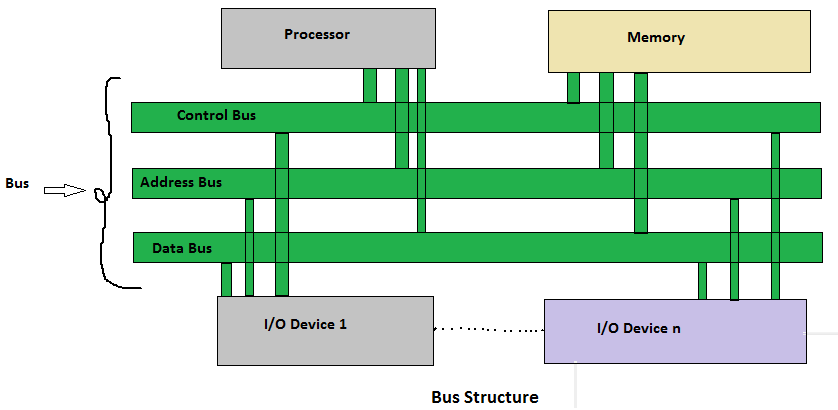Unit-1 BCS302
COA Buses
In computer systems, “buses” refer to a set of wires or conductors that are used to transmit data, addresses, and control signals between various components of the computer.
1. What’s a Bus, Anyway?
Okay, let’s break it down. Imagine a bus as a busy highway, but instead of cars and trucks, it’s filled with data, commands, and information. This digital highway is what we call a “bus” in the tech world. It’s like the road connecting different parts of your computer or your devices, allowing them to chat and share important stuff.
2. Types of Buses:

There are several types of buses. Each type of bus serves a specific purpose in facilitating communication and data transfer within a computer system. Here are the main types:
- Data Bus:
- Purpose: The data bus is responsible for carrying data between the CPU (Central Processing Unit), memory, and other peripheral devices.
- Function: It transfers the actual data being processed, such as numbers, text, or program instructions.
- Width: Data buses can vary in width, with common widths being 8, 16, 32, or 64 bits. A wider bus can transfer more data at once, which can enhance performance.
- Address Bus:
- Purpose: The address bus is used to specify the memory location or address where data needs to be read from or written to.
- Function: It carries the memory address that corresponds to the data being transferred on the data bus.
- Width: The width of the address bus determines the maximum amount of memory the CPU can access. For example, a 32-bit address bus can access up to 4 GB of memory.
- Control Bus:
- Purpose: The control bus manages and coordinates the operations of various components within the computer system.
- Function: It carries control signals that indicate the type of operation to be performed, such as read, write, or fetch instructions.
- Signals: Control bus signals include read, write, memory enable, and clock signals, among others.
3. How Buses Work
Now, you might be wondering how these buses work together. It’s like a well-orchestrated dance! When your computer needs to, let’s say, open a picture you clicked, it sends a request on the address bus, saying, “Hey, I need the picture from this address!” The data bus goes fetches it, and the control bus ensures everyone follows the traffic rules.
4. The Bigger Picture
Why is all this bus talk important? Well, it’s like understanding the roads in your city. When you know the highways and streets, you can get to your favorite places faster and without getting lost. Similarly, knowing how buses work in COA helps your computer run smoothly and efficiently.
5. Buses Beyond Computers
Buses aren’t just inside your computer; they’re all around us in the tech world. Your smartphone, tablet, even the smart thermostat in your home—all use buses to communicate. Understanding buses isn’t just about one device; it’s like knowing the language of the entire tech universe.
6. Fun Fact: Expanding Horizons
In the tech world, we sometimes need more lanes on our digital highways. That’s where expansion buses come in. They’re like building new lanes on a road to accommodate more traffic. Devices like graphics cards or extra memory modules use expansion buses to join the digital traffic.
So, there you have it—an enjoyable ride through the world of buses in COA. Buses are like the unsung heroes of the tech world, ensuring that your devices can communicate and share information seamlessly. The next time you send a message, stream a movie, or play a game, remember that it’s these digital highways making it all happen.
Image Credit Pixabay
Previous Topic:
0 Comments